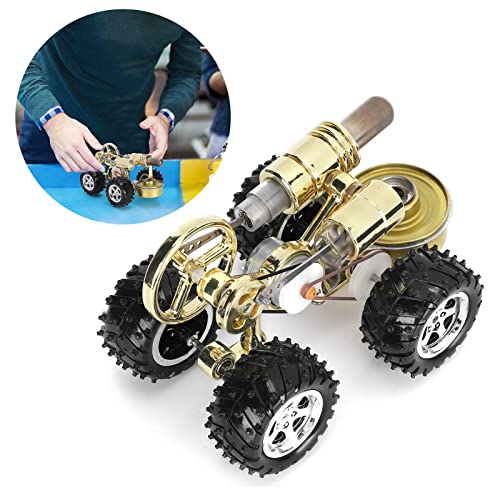I built the original as a proof of concept and to confound the curious :-

I have exhibited this every year at our local modeling club as a curiosity.
However it's always been pug-ugly and I figured I needed to tart it up some.

Top Left - Beginning to look old.
Top Right - I normally use an old turntable as a flywheel - even more ugly.
so I figured I would give it a flywheel and a presentation base.
Unfortunately every time I looked at it I was remined of the old adage that you can't put lipstick on a pig - so I set about giving it a facelift as well as adding a few new confounding wrinkles :-

So now the whole thing rotates vertically, can be reversed by changing the "timing" on the ball bearing and the addition of a pair of black granite gears (water-jet cut) which I jest are from Fred Flintstone's car.
A short video of it running.
Note: What makes it "improbable" is that the pistons go up and down twice per revolution - so its not a simple eccentric mechanism.

If you've seen it before keep it under wraps while others have a go at figuring out how the thing works. Regards, Ken I

I have exhibited this every year at our local modeling club as a curiosity.
However it's always been pug-ugly and I figured I needed to tart it up some.

Top Left - Beginning to look old.
Top Right - I normally use an old turntable as a flywheel - even more ugly.
so I figured I would give it a flywheel and a presentation base.
Unfortunately every time I looked at it I was remined of the old adage that you can't put lipstick on a pig - so I set about giving it a facelift as well as adding a few new confounding wrinkles :-

So now the whole thing rotates vertically, can be reversed by changing the "timing" on the ball bearing and the addition of a pair of black granite gears (water-jet cut) which I jest are from Fred Flintstone's car.
A short video of it running.
Note: What makes it "improbable" is that the pistons go up and down twice per revolution - so its not a simple eccentric mechanism.

If you've seen it before keep it under wraps while others have a go at figuring out how the thing works. Regards, Ken I
Last edited:













![MeshMagic 3D Free 3D Modeling Software [Download]](https://m.media-amazon.com/images/I/B1U+p8ewjGS._SL500_.png)
![TurboCAD 2020 Designer [PC Download]](https://m.media-amazon.com/images/I/51UKfAHH1LL._SL500_.jpg)























![DreamPlan Home Design and Landscaping Software Free for Windows [PC Download]](https://m.media-amazon.com/images/I/51kvZH2dVLL._SL500_.jpg)






























